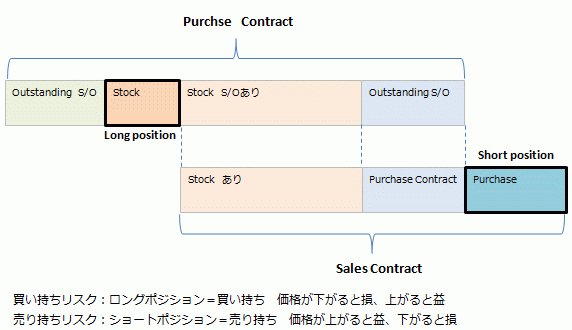In the inventory business, purchase contracts anticipating future demand or rising material prices, and sales contracts anticipating falling sales prices, arise. However, this introduces risks if the market moves in the opposite direction. To manage these positions, it’s necessary to distinguish inventory into items linked to sales contracts and those that are not. Production Control System in Indonesia It’s not limited to Indonesia, but it’s often said that the ultimate goals of the manufacturing industry are twofold: "cost reduction through productivity improvement" and "delivering products on time without delays." From a management perspective, business plans are crafted to maximize growth based on market supply and demand adjustments. However, even if sales increase due to low pricing, it only reduces gross profit, leading to losses from selling and administrative expenses or non-operating costs. On the other hand, raising unit prices isn’t straightforward due to market price considerations. Therefore, process management based on production plans aimed at reducing costs through ... 続きを見る

Sales Contracts and Purchase Contracts
In the inventory business, purchase contracts anticipating future demand or rising material prices, and sales contracts anticipating falling sales prices, occur. It’s somewhat akin to warrants in stock trading.
In this case, both long (buying) and short (selling) positions carry risks if the market moves inversely. To manage these positions, it’s necessary to distinguish inventory into items linked to sales contracts and those that are not.
To make this distinction, the sales contract (S/O number) must be linked at the time of the material purchase contract (P/O issuance) and managed in the inventory management system along with the receipt number.
Long and Short Positions
However, items for which a sales contract isn’t confirmed at the time of receipt are recorded as long positions upon entry. Later, when linked to a sales contract, an S/O number is assigned.
Thus, to manage positions as described above, the system requires two functions:
- Assigning an S/O number at the time of receipt
- Assigning an S/O number to long-position inventory after entry
For item 2, an implementation could involve separating long-position inventory from others using locations in inventory movement.




